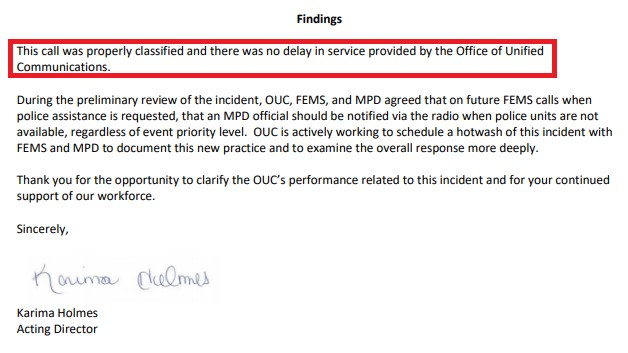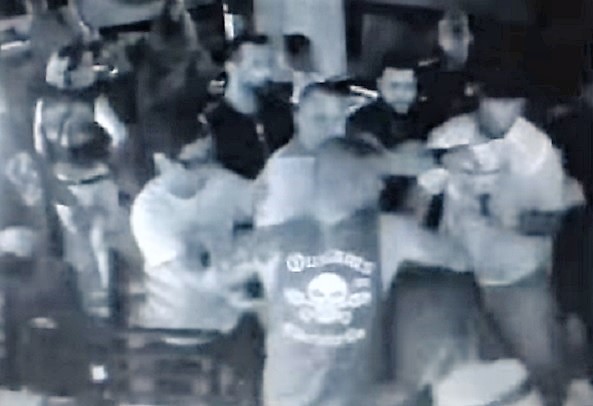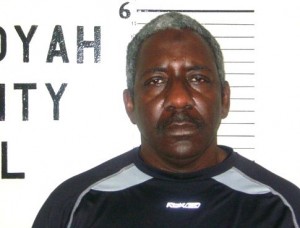NEW: Radio traffic confirms DC 911 failed to tell police crucial info before David Griffin died
Timeline shows police were at the wrong location more than four minutes before Griffin went into the Washington Channel

Looking for a quality used fire truck? Selling one? Visit our sponsor Command Fire Apparatus
DC 911’s failure to immediately share a critical address update likely kept police from getting to David Griffin minutes before he went into the Washington Channel on March 14. New details from DC Police radio traffic made available to STATter911 show a timely relay of the updated address would likely have allowed the first police officer to get to Griffin more than four minutes before his fatal plunge into the water. It might have given police a chance to intervene, possibly providing officers an opportunity to save Griffin’s life.
If he had promptly been given the correct location, the first officer’s arrival would also likely have occurred even before the ambulance crew with Griffin declared a 10-33 — an urgent call that the crew was in trouble and needed police immediately. In addition, the radio traffic shows a police dispatcher failed to immediately relay the 10-33 to responding officers along with other information that would have indicated the urgent nature of the incident.
This timeline greatly conflicts with official findings from Office of Unified Communications acting director Karima Holmes. Holmes declared on March 29 DC 911 had no role in the delayed police response. Those findings are the last official account of the incident OUC has shared with the public.

Since those findings, Holmes admitted in a letter to DC Council member Charles Allen that the address update was mishandled. Holmes said in the letter obtained by STATter911 that the address change should have been put into the computer as a “critical update”. Making it a “critical update” would have highlighted the information in red on the dispatch screen. There have long been complaints from fire, EMS and police that OUC’s dispatchers fail to relay crucial, updated information like this address change.
By the accounts of 911 callers and an ambulance crew David Griffin was out of control. He was harming himself and was a potential threat to others. Previously, STATter911 showed that police weren’t dispatched for 20 minutes because OUC failed to update the call from Priority 2 to Priority 1. A Priority 1 under DC Police procedures is for calls “where an imminent threat to the safety of persons or the potential for significant property damage exists”.
At the time of the original 911 calls no officers were available to handle a Priority 2 call. Making it Priority 1 would have allowed officers to break away from less serious emergencies to immediately respond to Griffin’s crisis. Now, the new information contained in police radio traffic illustrates how OUC’s inability to relay important updates further delayed the response of police officers.
Over many weeks STATter911 has repeatedly asked OUC for updated information on the March 14th call. The last official statement from OUC came May 31. It was in response to a STATter911 question asking why Karima Holmes didn’t reach out to Griffin’s daughter as Holmes promised in an April 7 email. Here’s that statement:
On April 29, 2022, the Office of Unified Communications (OUC) received official notification from the DC Office of Risk Management (ORM) that a TORT claim had been filed by Aujah Griffin in relation to the Washington Channel incident. As not to compromise the integrity of any aspect of their investigation into this claim, OUC has been advised by legal counsel not to engage in any further discussions related to this matter.
Police radio traffic
The crew from Ambulance 18 told DC 911 at 6:38:55 p.m. that they had moved to P Street SW at Riverside, about two blocks from the original address of 4th and N SW. This important update was not immediately relayed to police. The police radio traffic shows the first officer arrived at 4th and N at 6:40:09 p.m. The officer said he couldn’t find the ambulance crew. The First District (1D) dispatcher told the officer 4th Street between N and M was still the best information they had. The dispatcher also said they checked with the communications supervisor and there was no new information. But neither the dispatcher or supervisor noticed that the address was changed more than a minute earlier.
The officer’s arrival at the wrong location was more than four minutes before Griffin took the fatal plunge into the water and more than two minutes before Ambulance 18’s urgent 10-33 call for help. The dispatcher apparently didn’t initially see the notes with the updated address. The dispatcher finally told the officer he was at the wrong location almost two minutes after his arrival at 4th and N. DC Police previously confirmed at that point the officer was at the intersection trying to track down witnesses to determine where Griffin and the ambulance crew went. The officer pulled up to the correct location at 6:44:26 p.m. less than 30 seconds before Ambulance 18 told OUC David Griffin was in the Washington Channel.
It’s clear from this new timeline information that if the officer had been given the updated address when it was first available he likely would have gone directly to P Street arriving, not seconds, but more than four minutes before David Griffin ended up in the water.
Police didn’t get other key information
The police radio traffic shows the address isn’t the only crucial information the police dispatcher failed to relay to officers:
- The dispatcher never told police that Griffin was jumping on cars and scaring bystanders.
- The dispatcher never relayed the message from Ambulance 18 that “The patient is belligerent, running all over the place, hurting himself. We can’t contain him. Possibly has PCP onboard”
- Dispatchers didn’t tell police that Ambulance 18 declared a 10-33 until two minutes and thirty seconds after the ambulance crew made that desperate call. The dispatcher mentioned the 10-33 only after prompting by responding officers.
That last bullet point is particularly disturbing. DC Fire & EMS crews have long complained they don’t get a prompt response from DC Police, even in cases where they’ve called a 10-33. Police radio traffic is encrypted, so it’s always difficult to learn when officers are dispatched following fire and EMS making an urgent call for police. Taking two minutes and thirty seconds to tell police that an ambulance crew is in trouble and only doing so when prompted by officers should be of concern to all in public safety in the District of Columbia.
OUC’s self investigations
Police officers familiar with the incident tell STATter911 they don’t know if their intervention would have saved David Griffin. What they do know is OUC’s multiple mistakes cut off every chance for them to try.
The reality of the police radio transmissions and the previously published fire and EMS radio traffic directly conflict with the findings by Karima Holmes that, “This call was properly classified and there was no delay in service provided by the Office of Unified Communications.”
The administration of Mayor Muriel Bowser has long allowed OUC to investigate itself. That’s been the case for each of the seven deaths over the last three years where STATter911 uncovered serious DC 911 mistakes. How many more deaths will occur before someone finally says OUC investigating itself really isn’t a good idea?
Above: Since 2019, STATter911 has discovered DC 911 mistakes in connection with deaths of at least seven people. David Griffin is among three that occurred this year.





